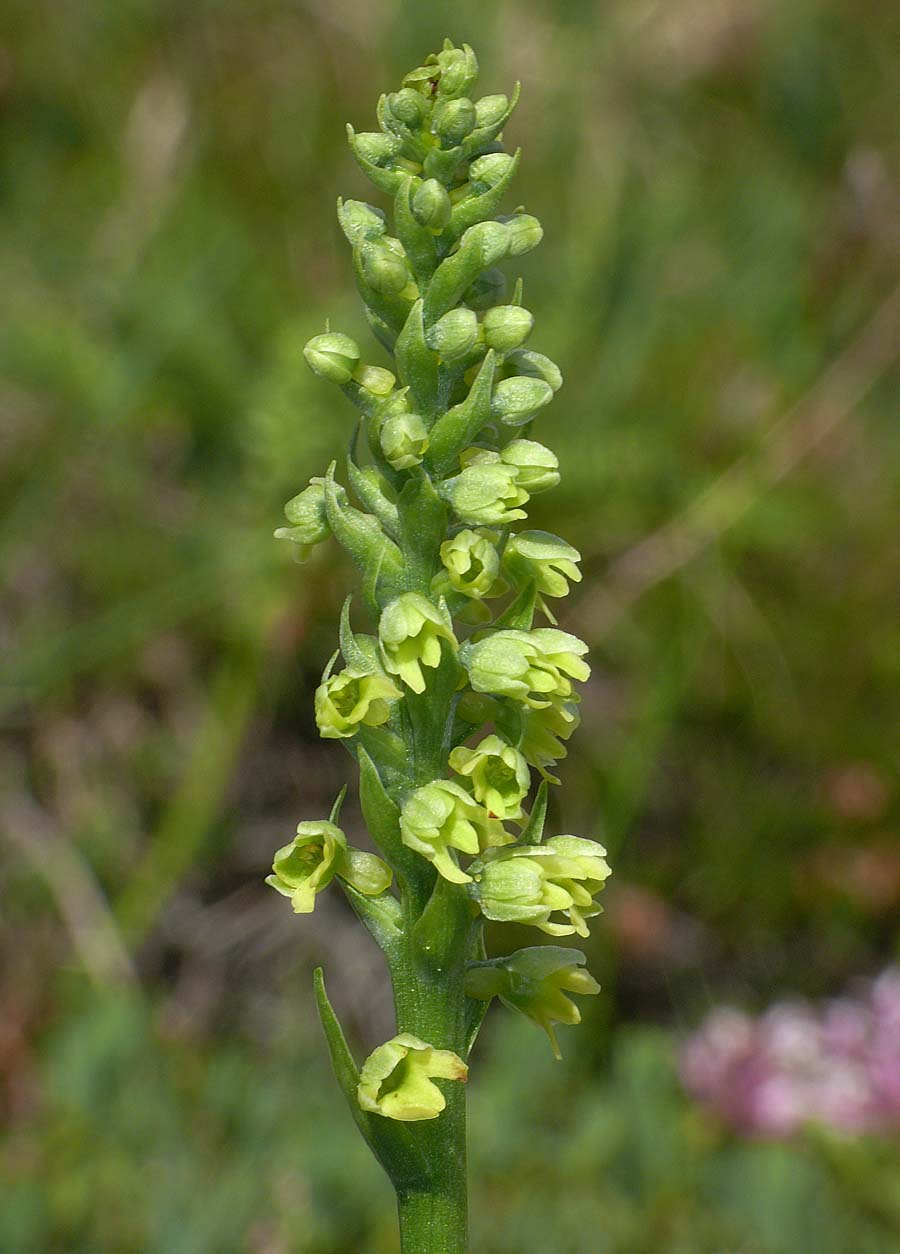Pseudorchis albida was first described by L. C. M. Richard from Pistoia, Italy in 1753. Its name refers to
its white(ish) colouration and is the sole member of the genus Pseudorchis. The species enjoys several
synonyms including Gymnadenia albida and Leucorchis albida, there being no great agreement as to its correct nomenclature. In the USA it is somewhat misleadingly called the Bright White orchid.
its white(ish) colouration and is the sole member of the genus Pseudorchis. The species enjoys several
synonyms including Gymnadenia albida and Leucorchis albida, there being no great agreement as to its correct nomenclature. In the USA it is somewhat misleadingly called the Bright White orchid.
It is a widespread species, which in both its varieties (albida and tricuspis) can be found throughout the boreo-alpine and temperate zones of Europe and beyond. It will tolerate a
range of conditions but albida is at its most frequent in full sun on slightly
acidic soils whereas tricuspis favours calcareous conditions in mountains or foothills. P. albida in both varieties is
an unprepossessing orchid that in the UK is a rare and declining
species where despite some persistent stations in Wales and northern
England, its main stronghold has now retreated to Scotland. In
continental Europe the position is rather better and tricuspis
can still be abundant in mountains up to 2700 metres. In the north of
its range (UK, Scandinavia) it can be found at sea level growing in
light woodland and even fens, as well as its more traditional habitat
in meadows and on grassy slopes.
At first glance the two varieties are indistinguishable and close inspection of the flower is required to separate them. In tricuspis the lip is equally three lobed whereas in albida the two lateral lobes are significantly shorter than the median lobe. Defining the distribution of the two varieties is not straightforward but in very general terms, albida can be found throughout Europe, though is largely replaced by tricuspis in the mountains of southern Europe (Alps, Balkans and Carpathians). A similar and closely related species, P. staminea is present in Scandinavia.
At first glance the two varieties are indistinguishable and close inspection of the flower is required to separate them. In tricuspis the lip is equally three lobed whereas in albida the two lateral lobes are significantly shorter than the median lobe. Defining the distribution of the two varieties is not straightforward but in very general terms, albida can be found throughout Europe, though is largely replaced by tricuspis in the mountains of southern Europe (Alps, Balkans and Carpathians). A similar and closely related species, P. staminea is present in Scandinavia.











